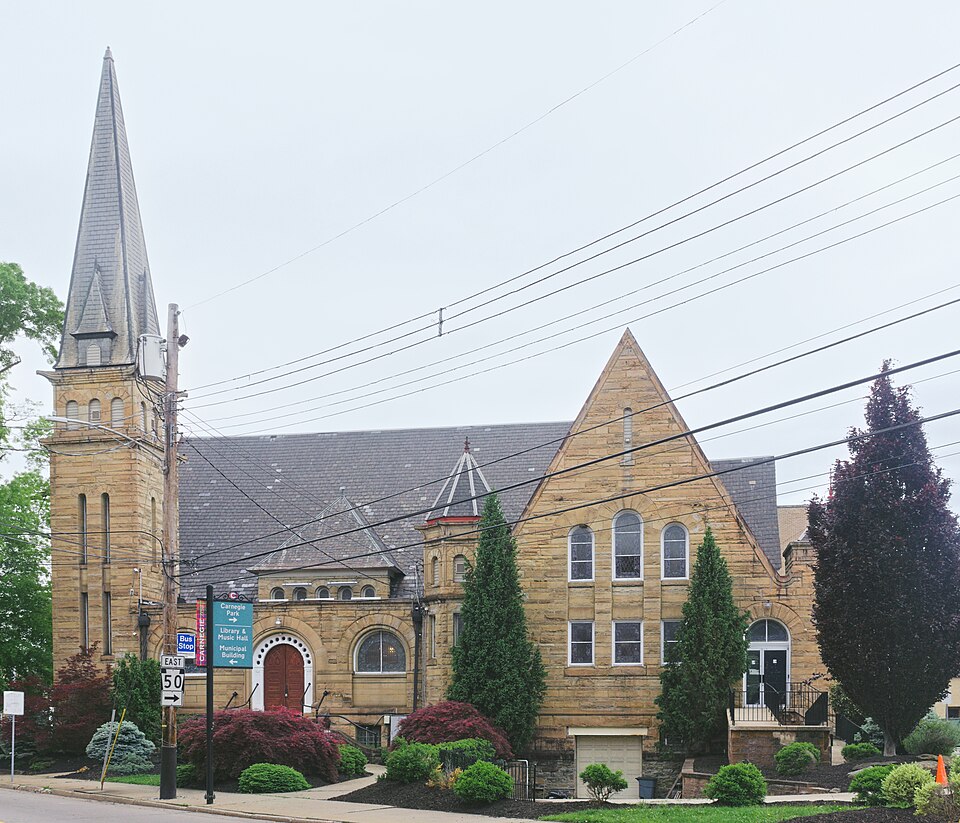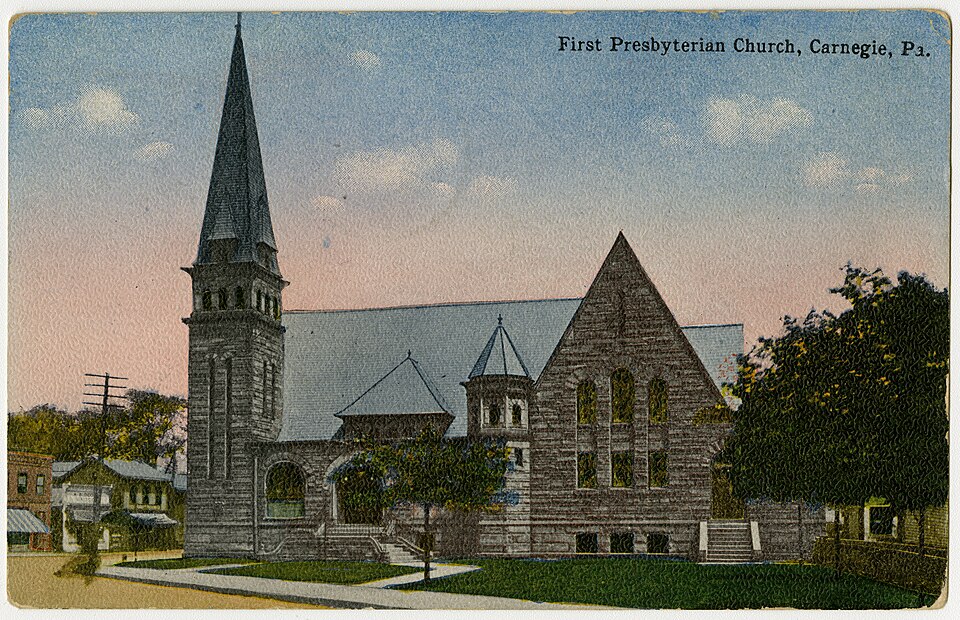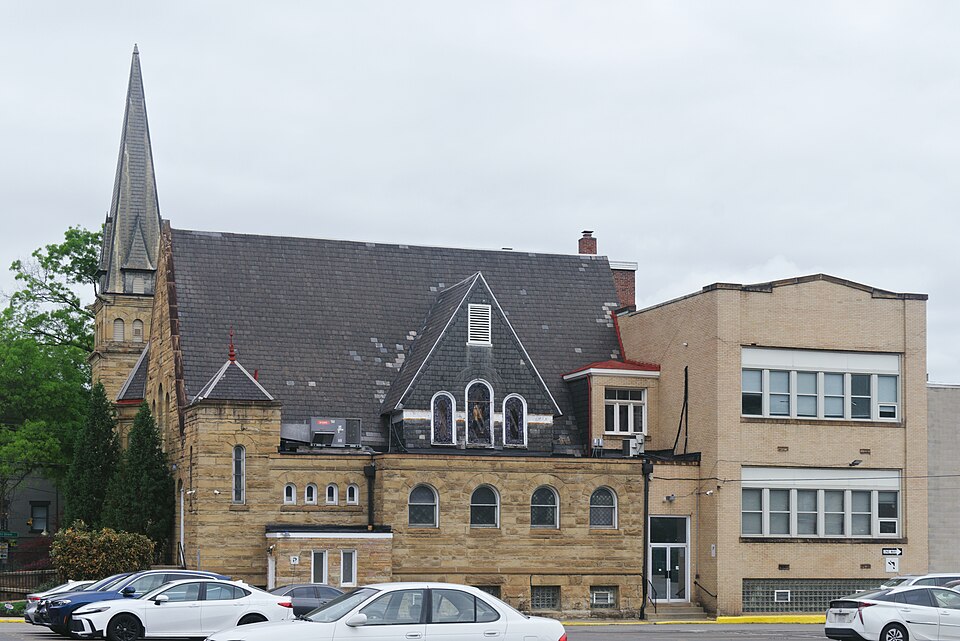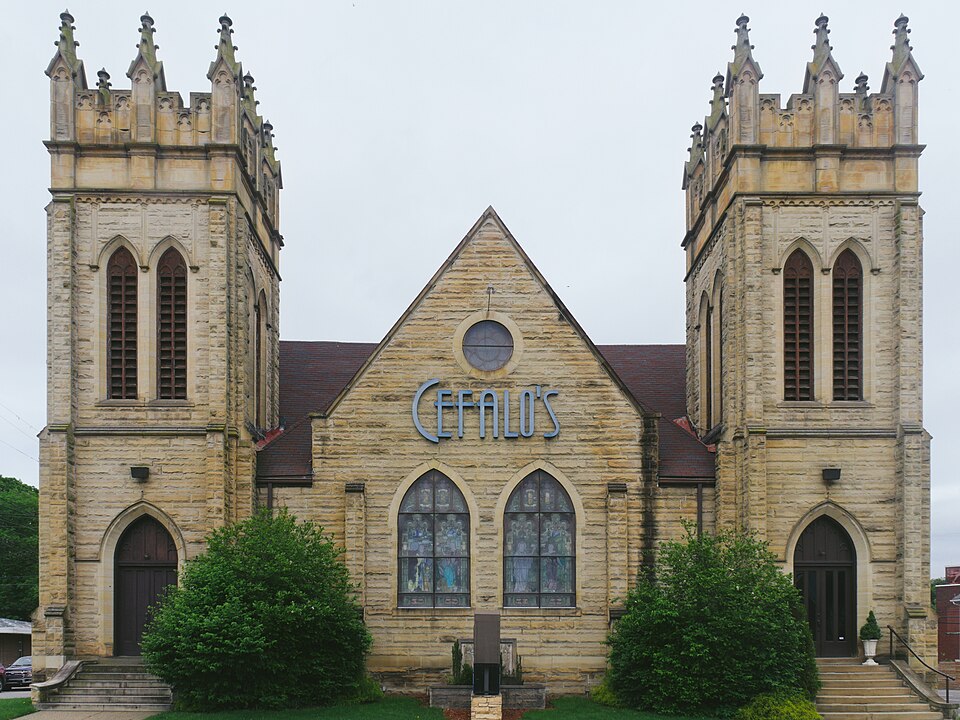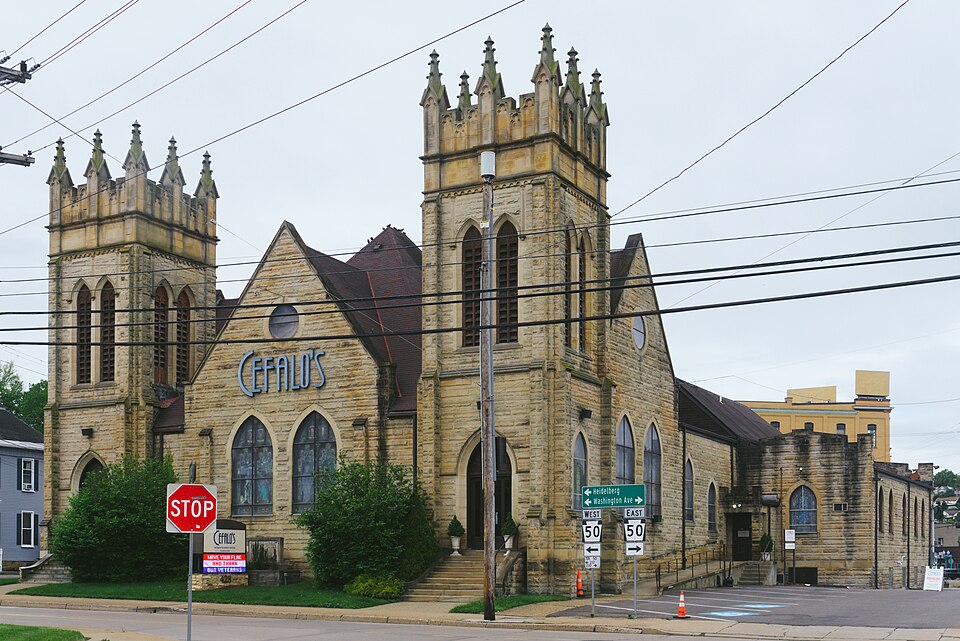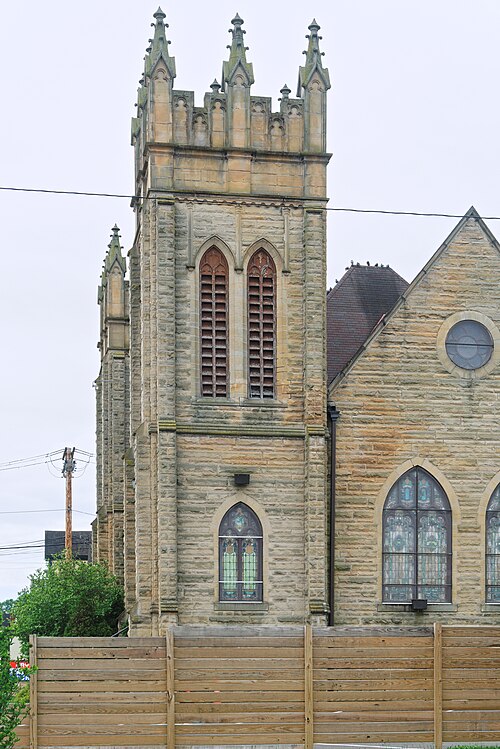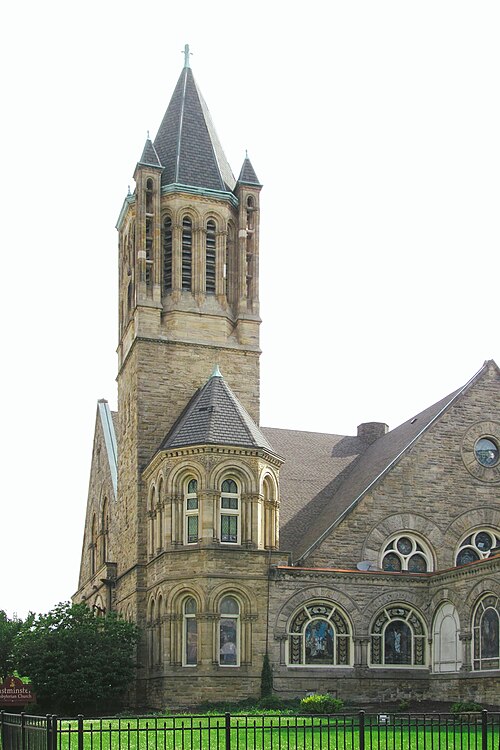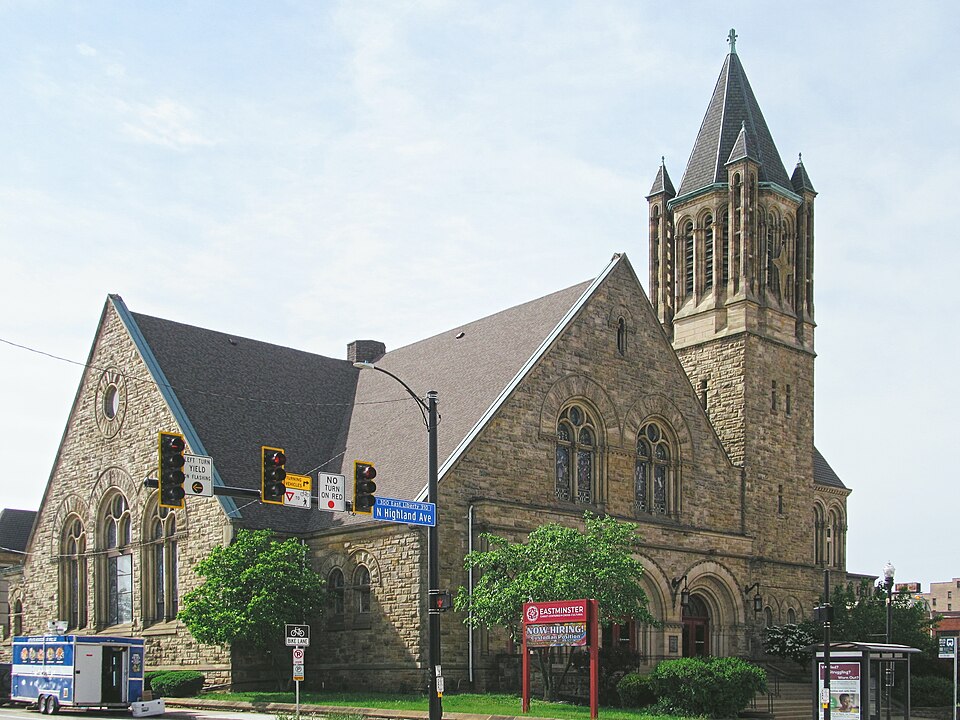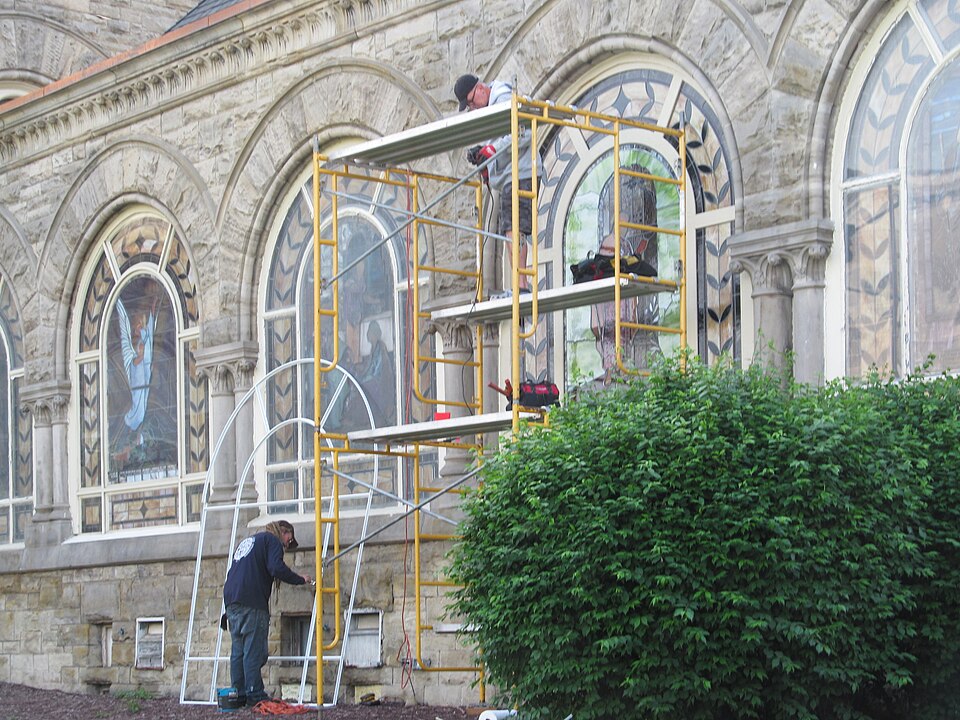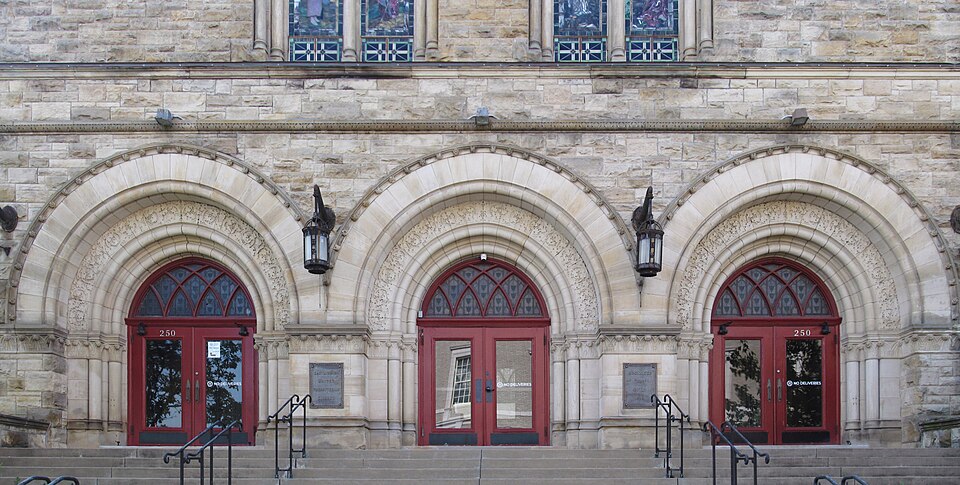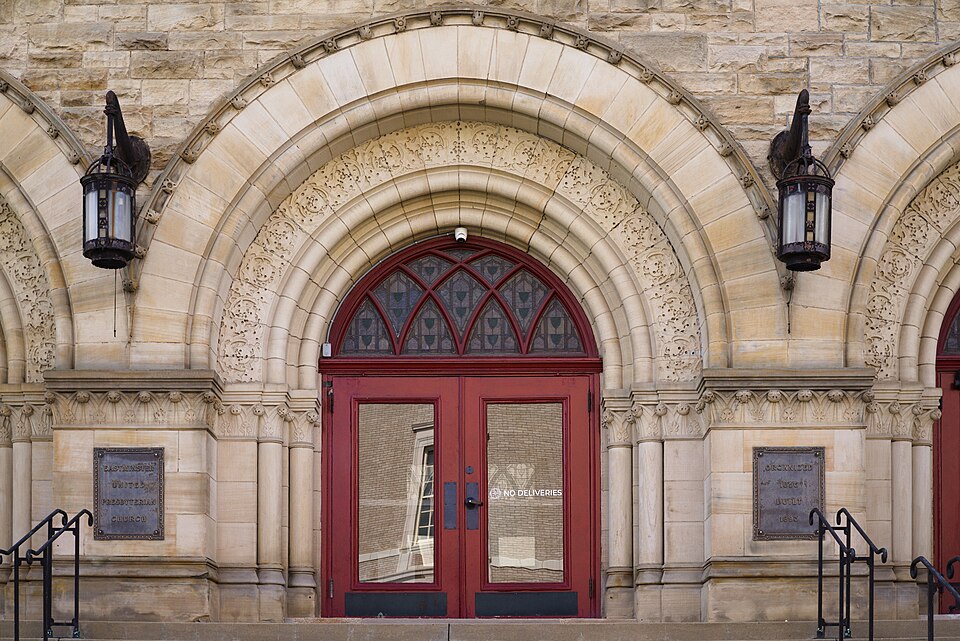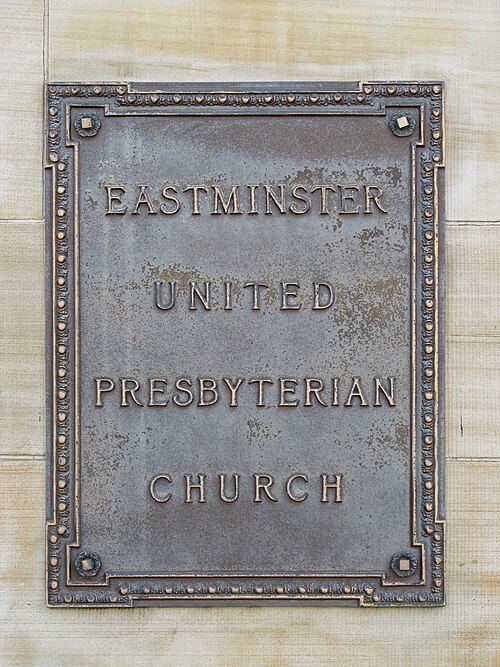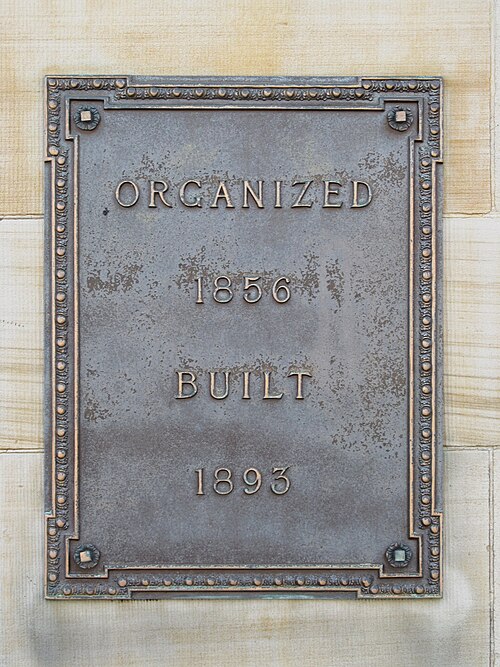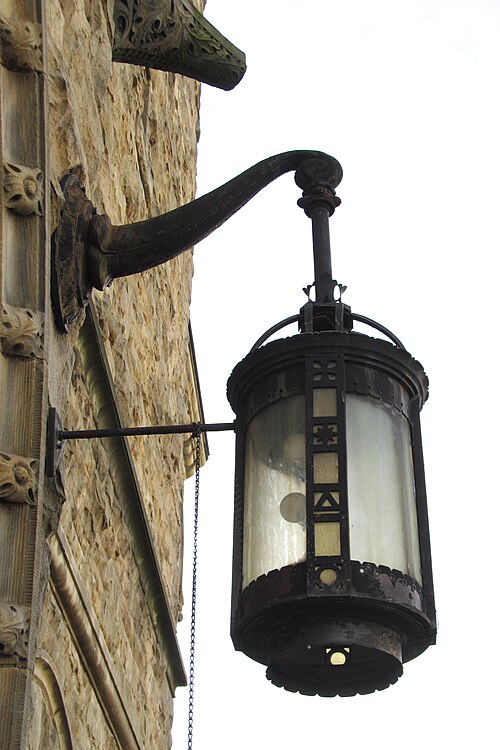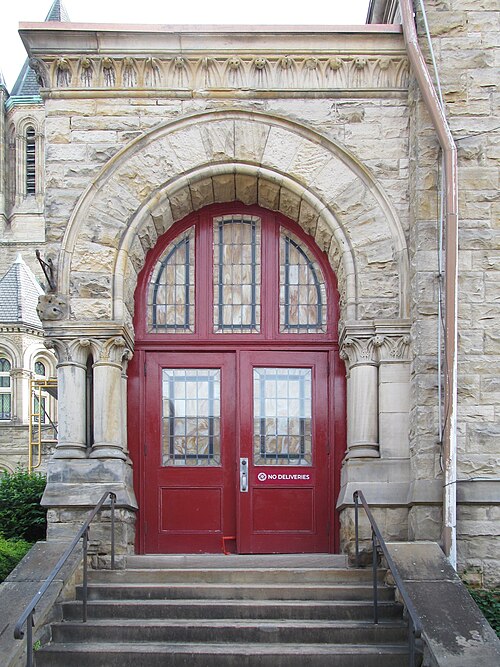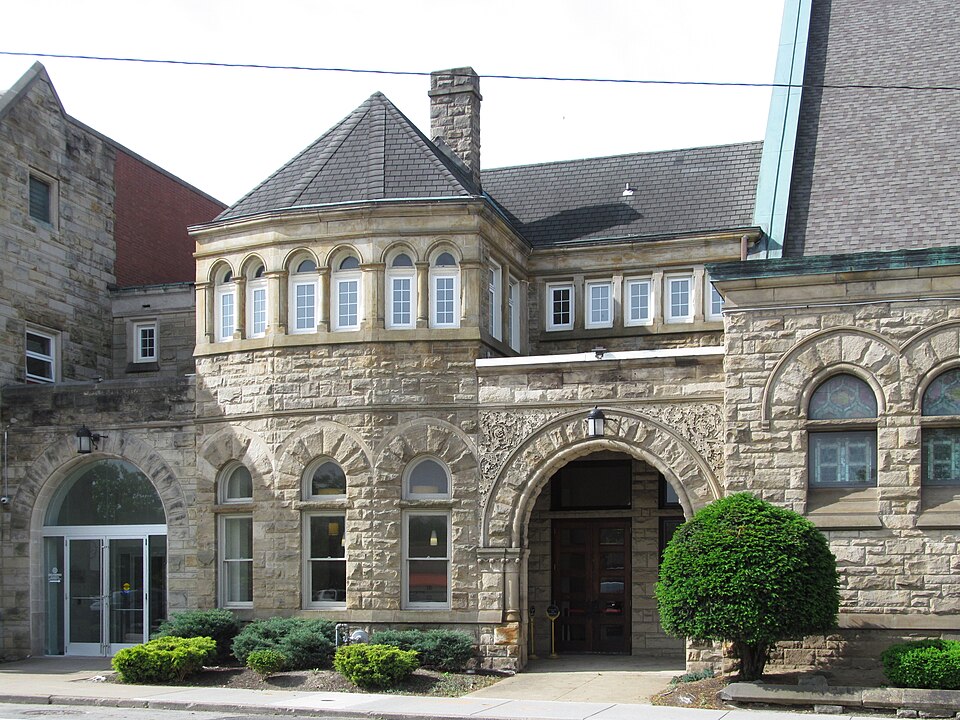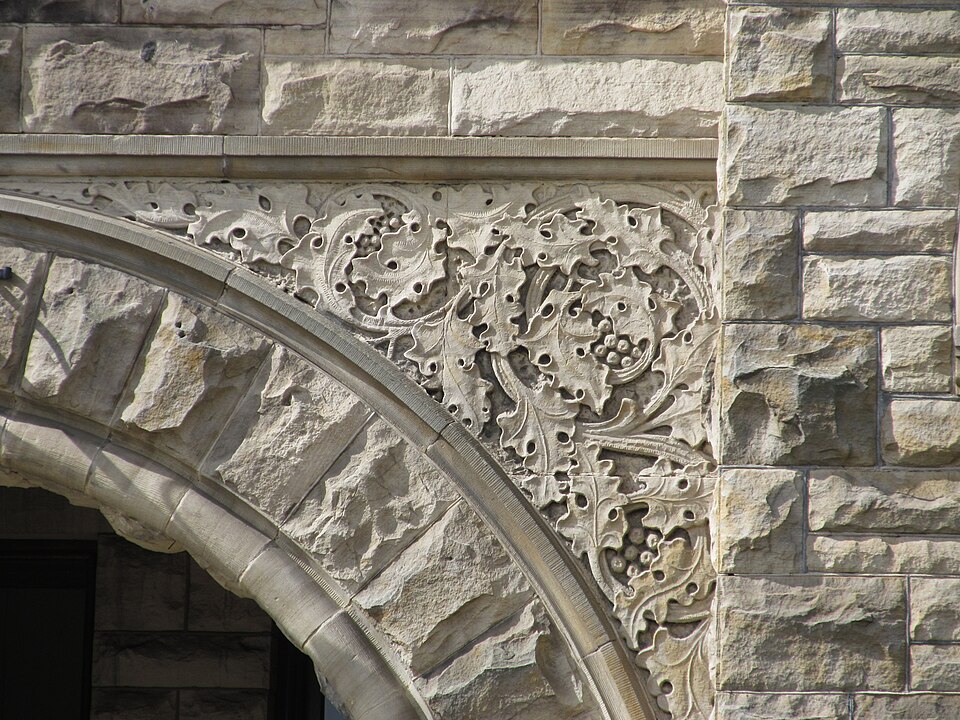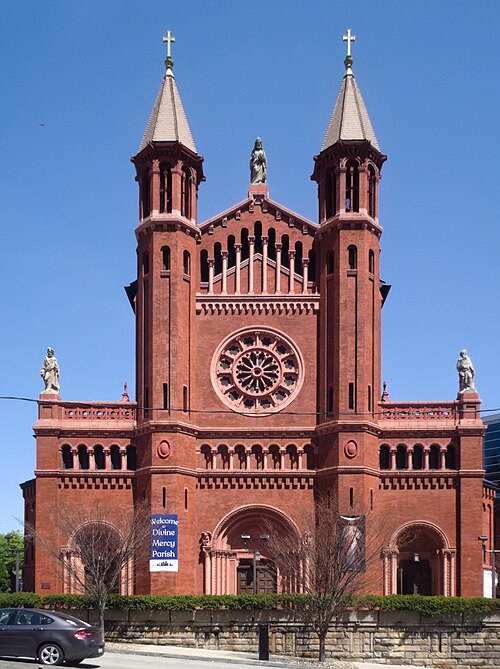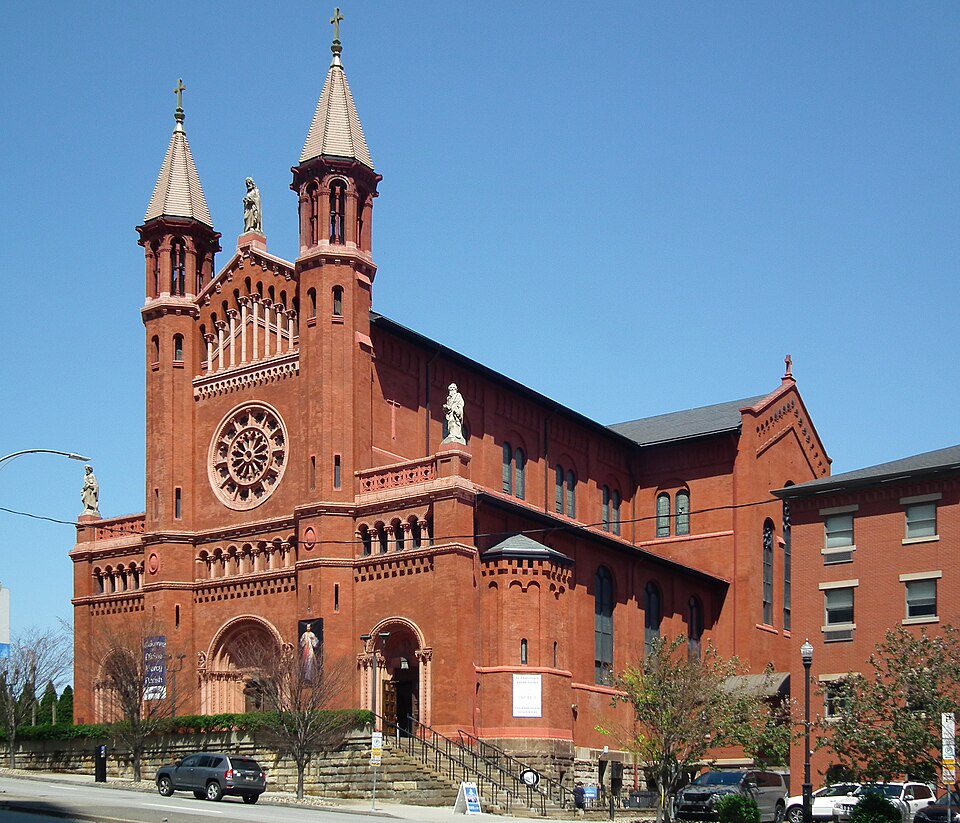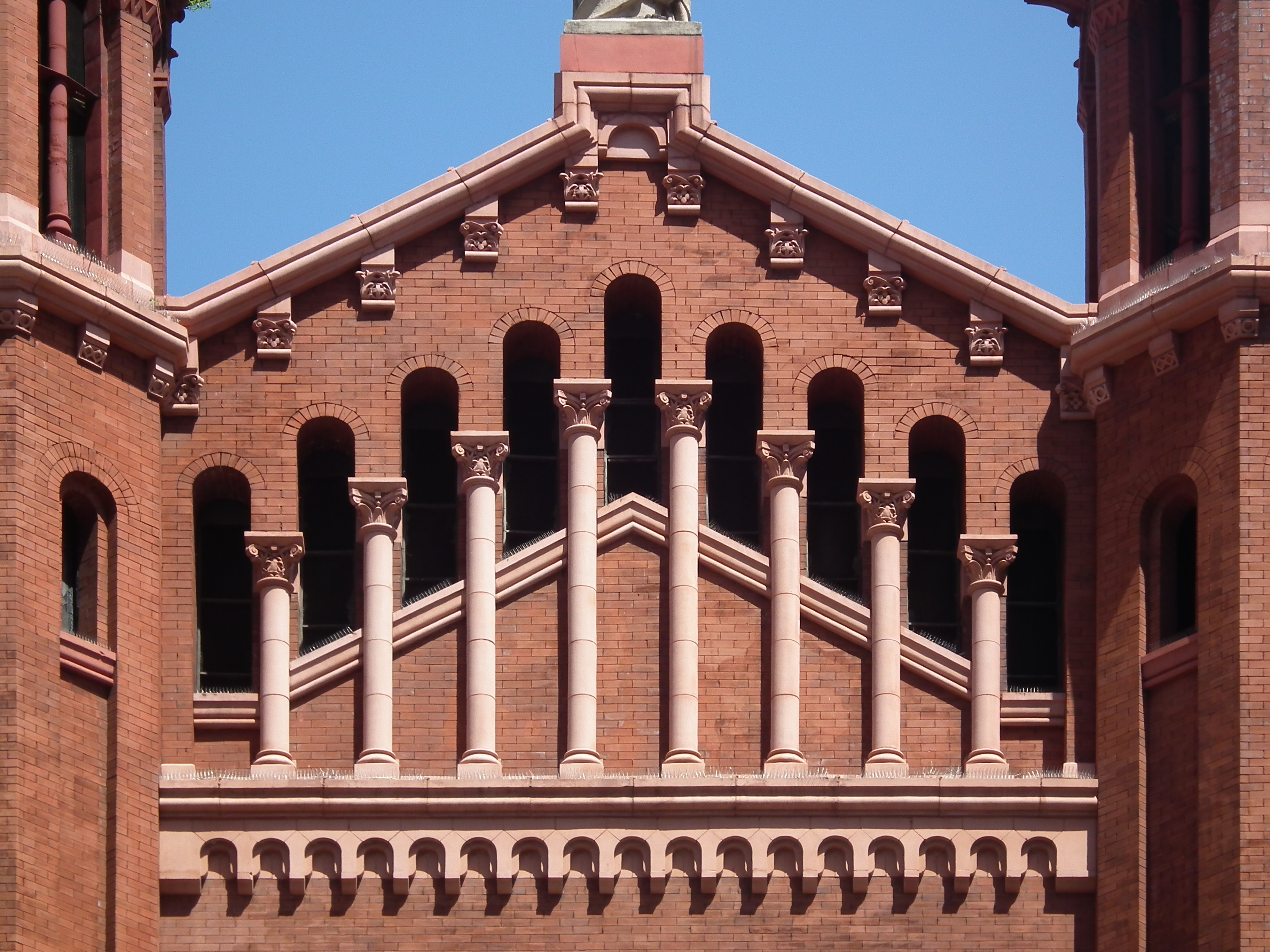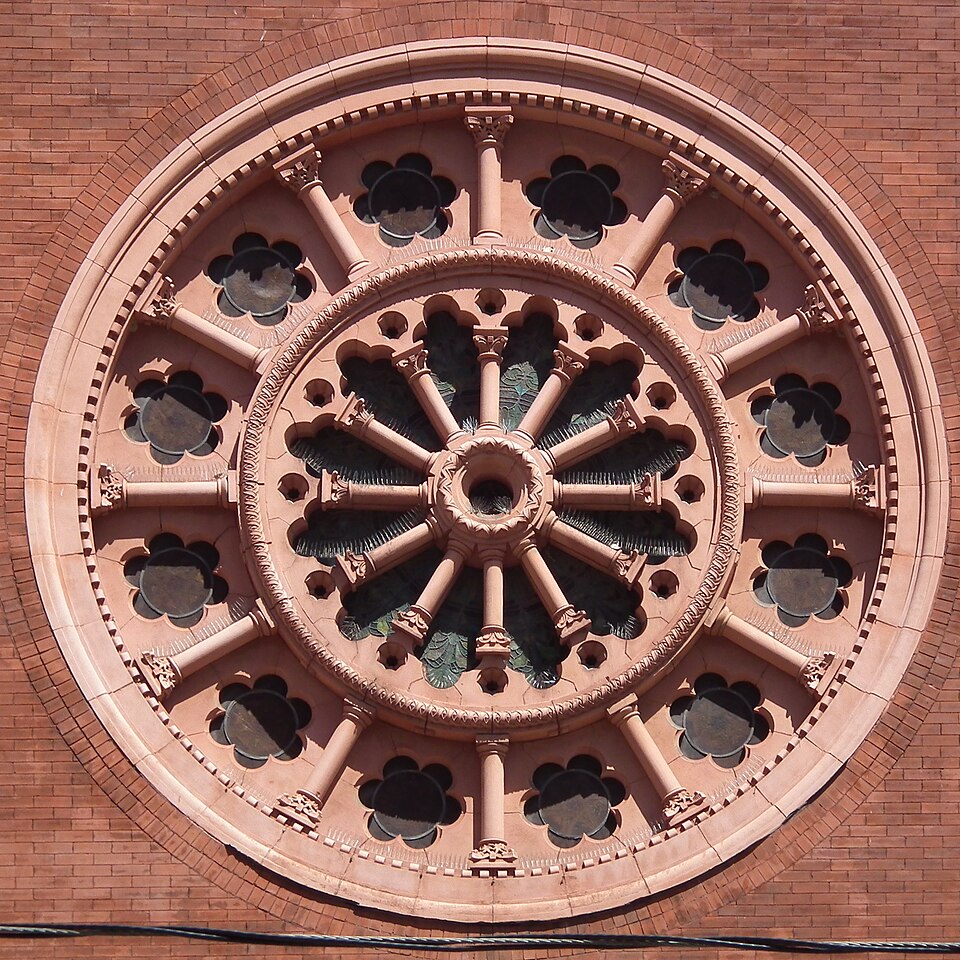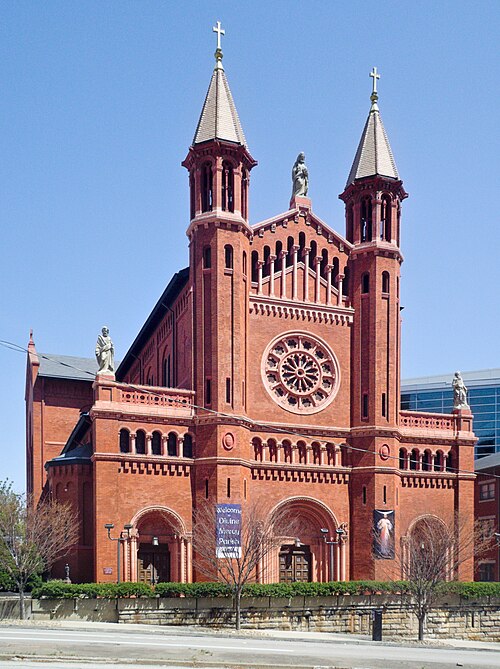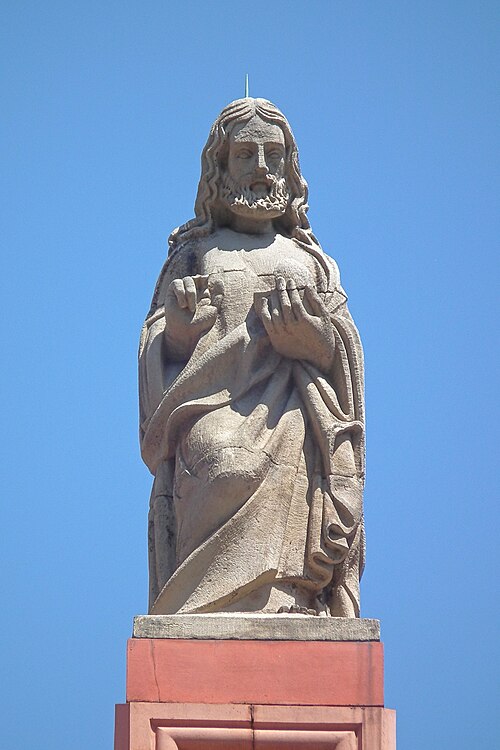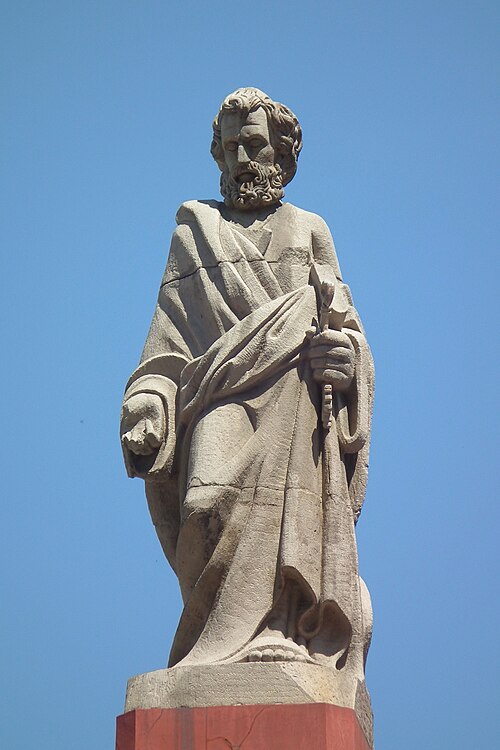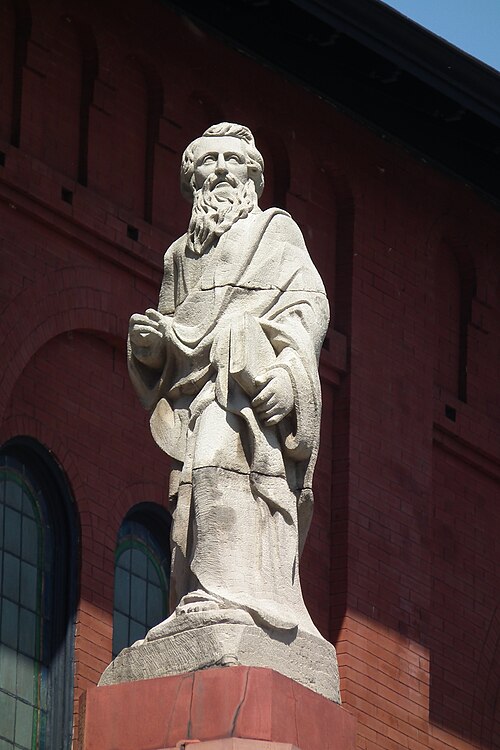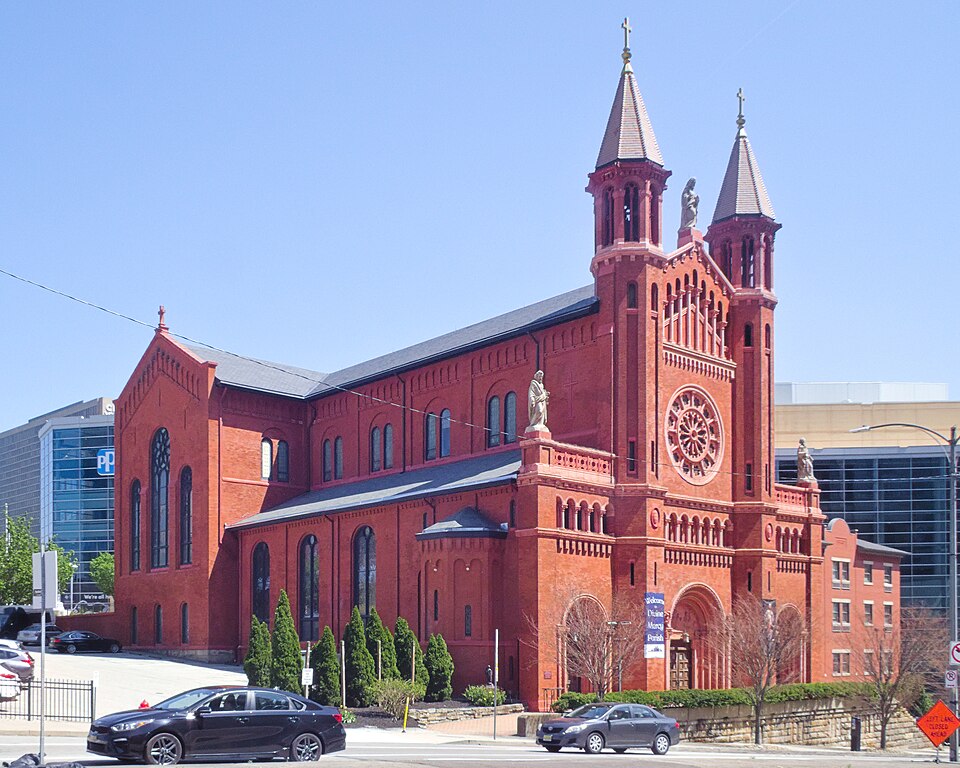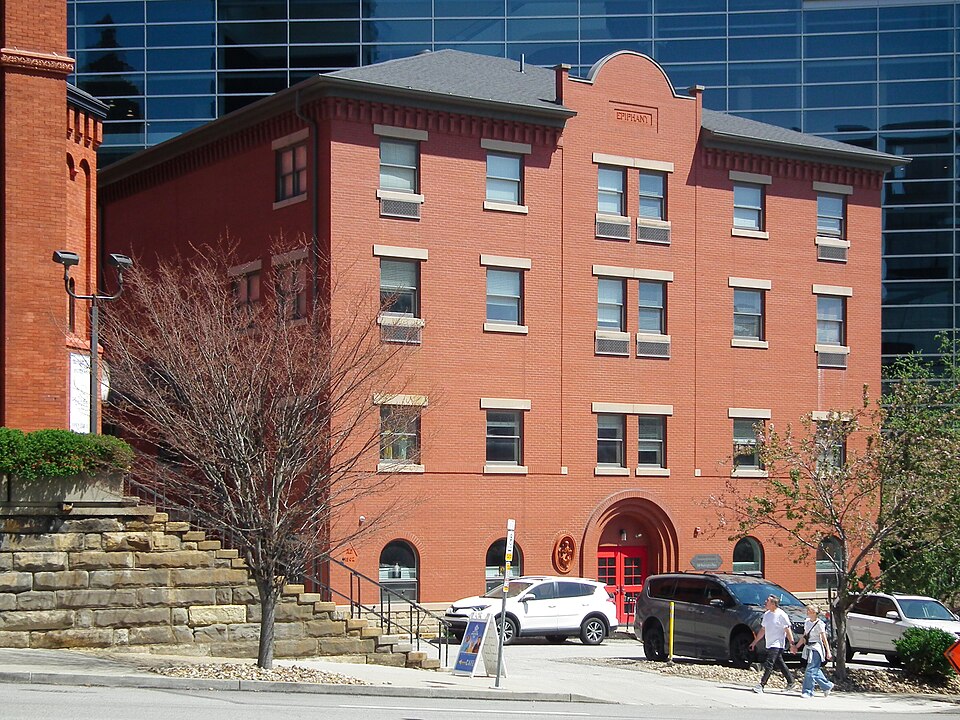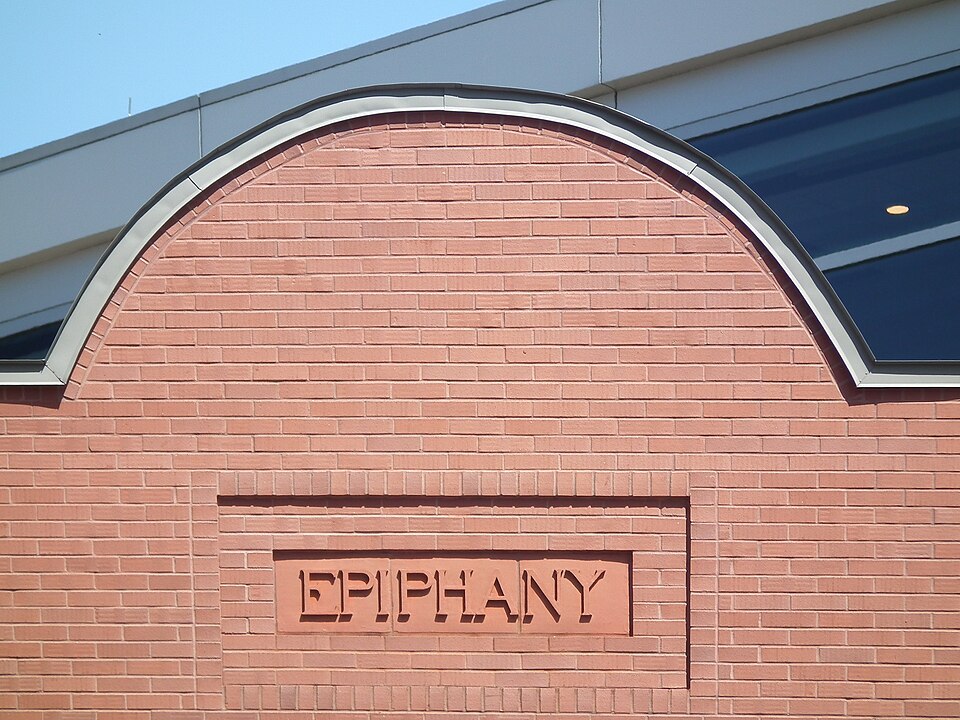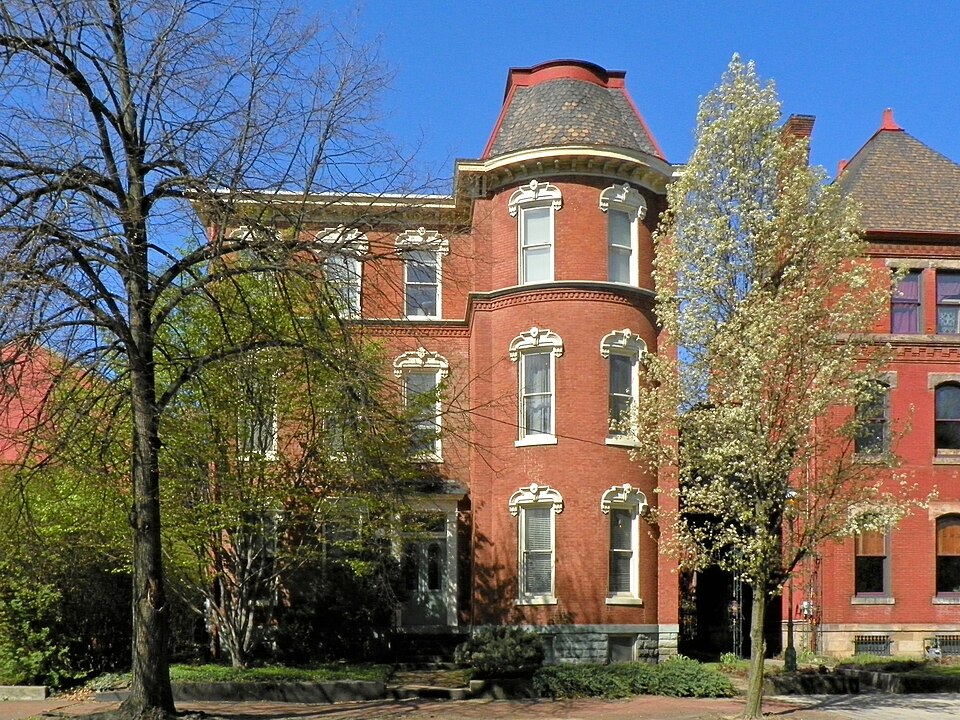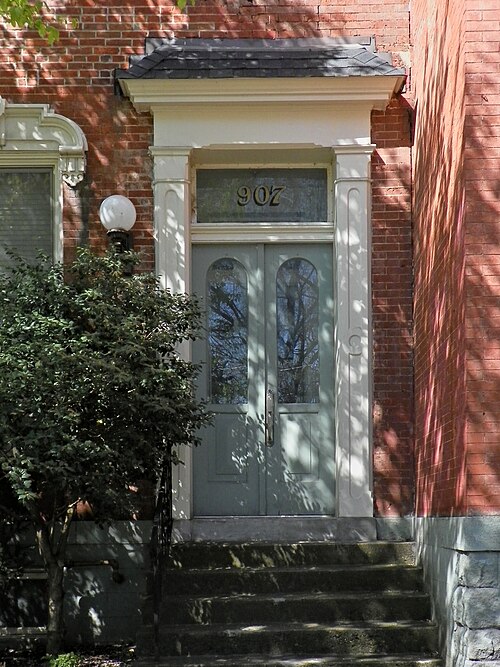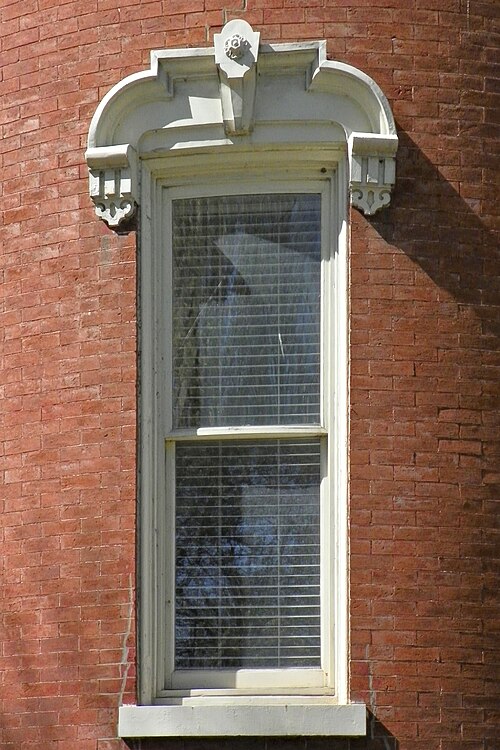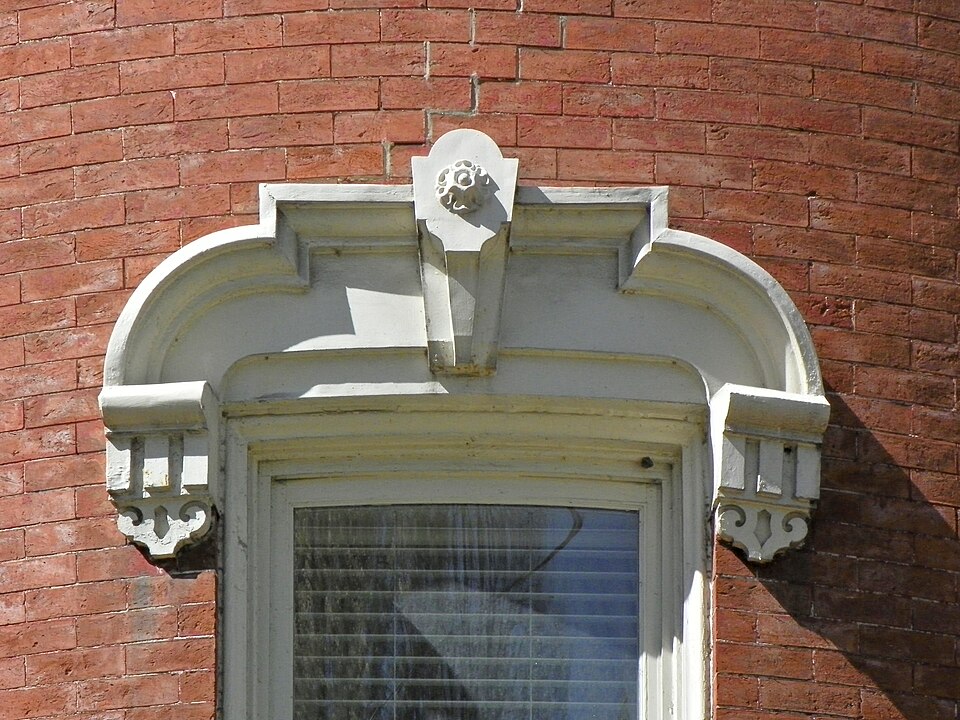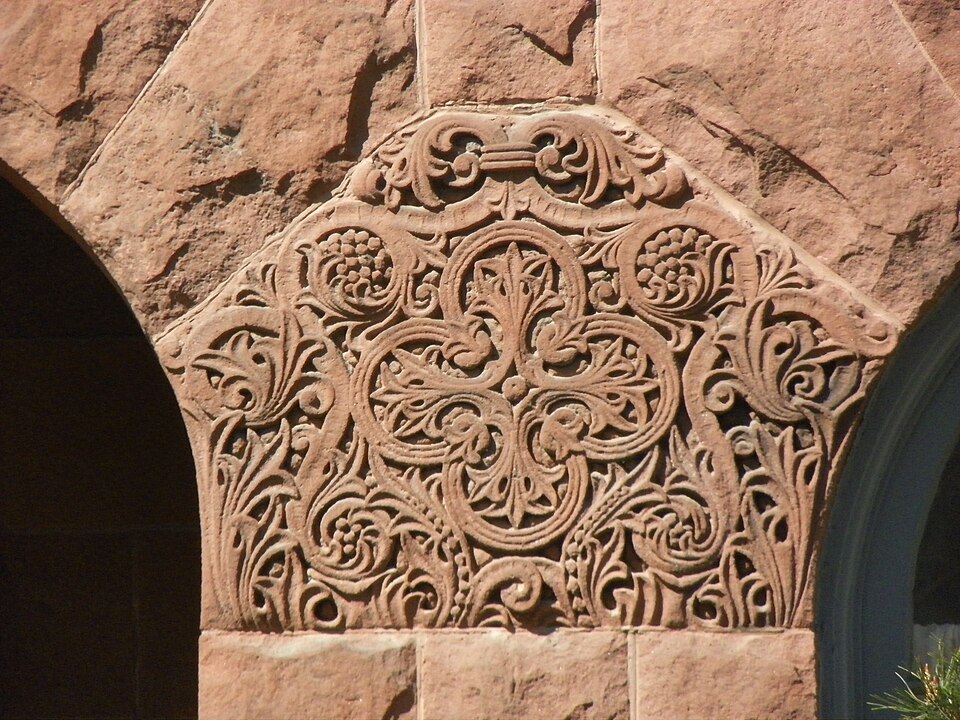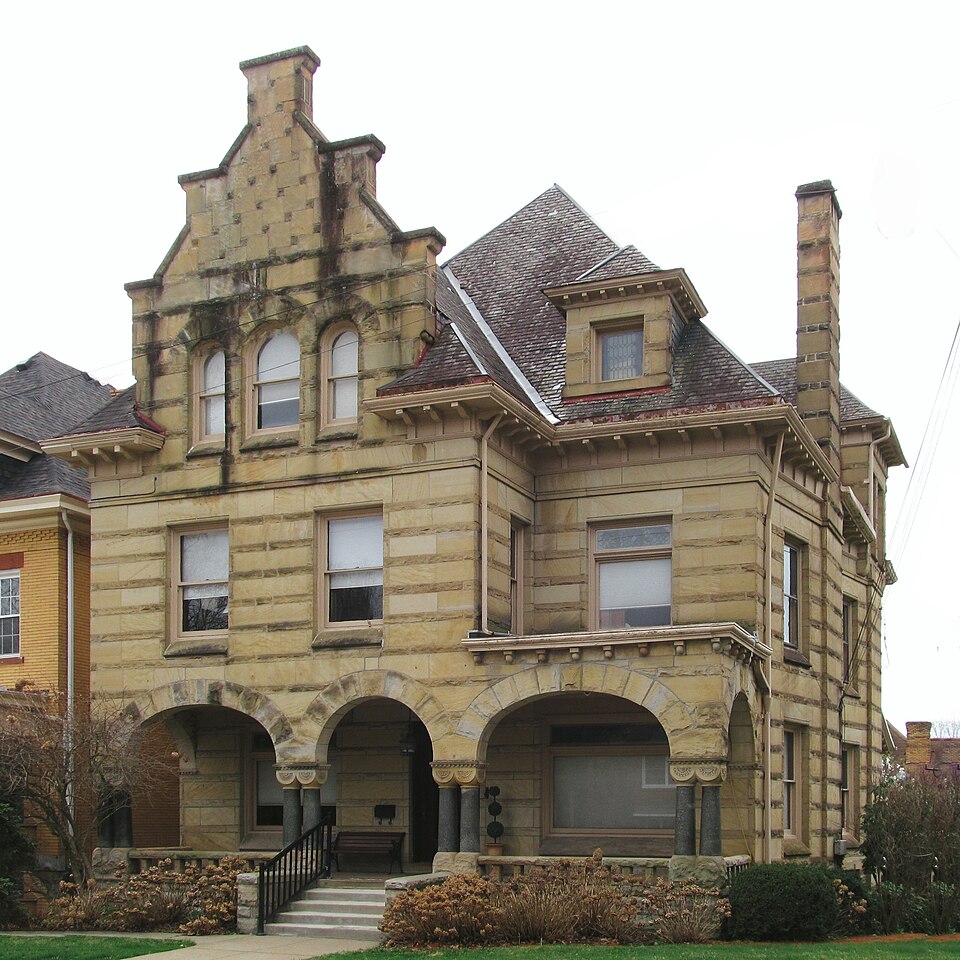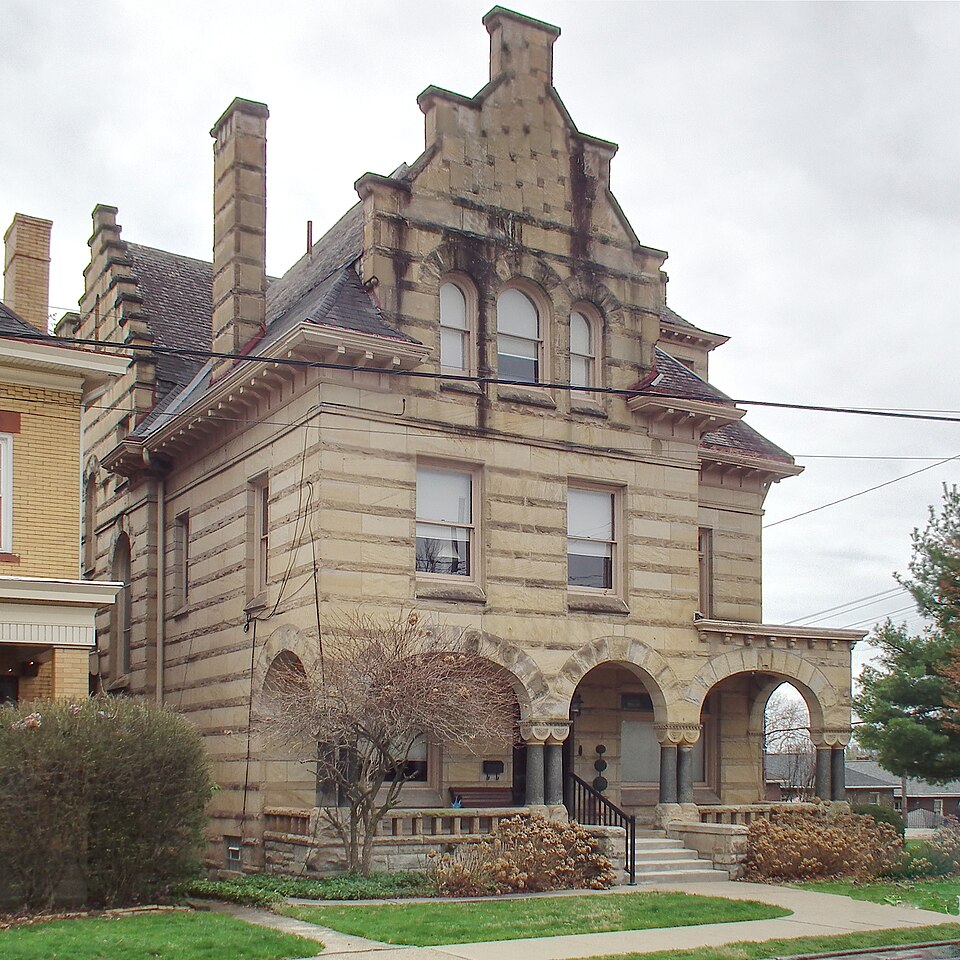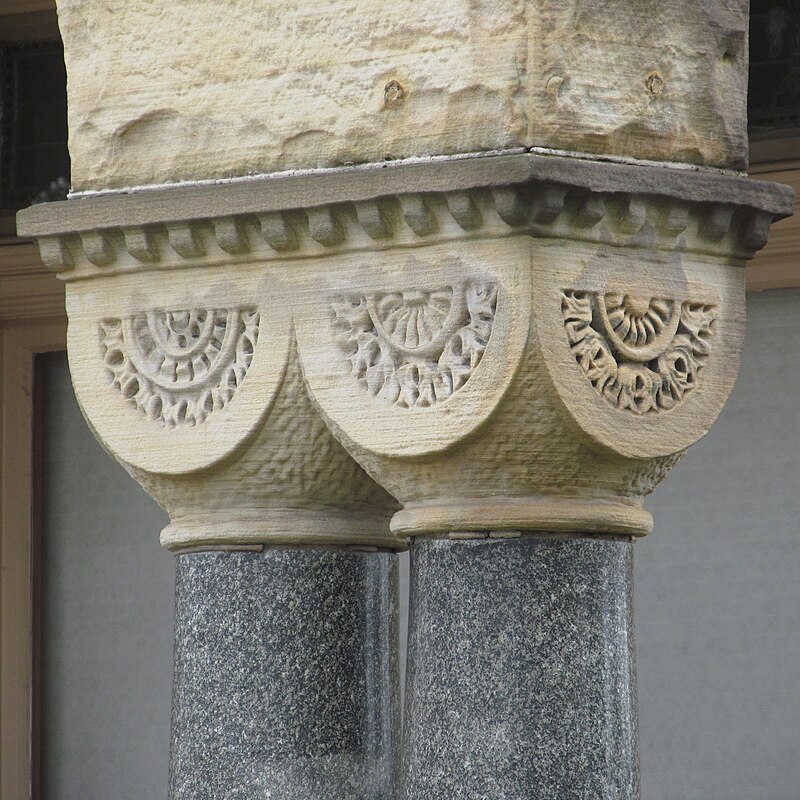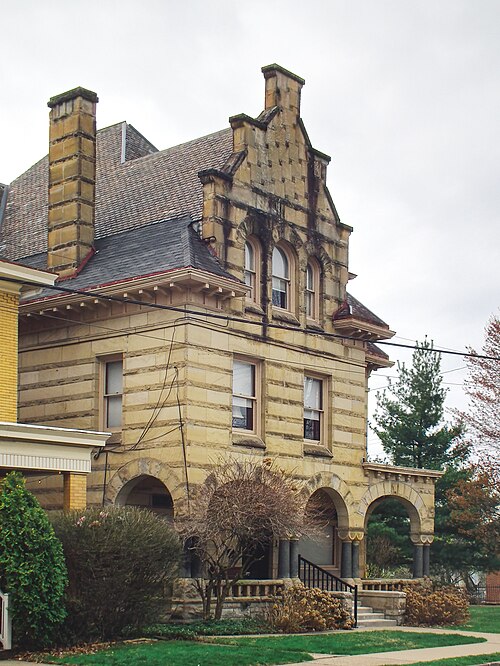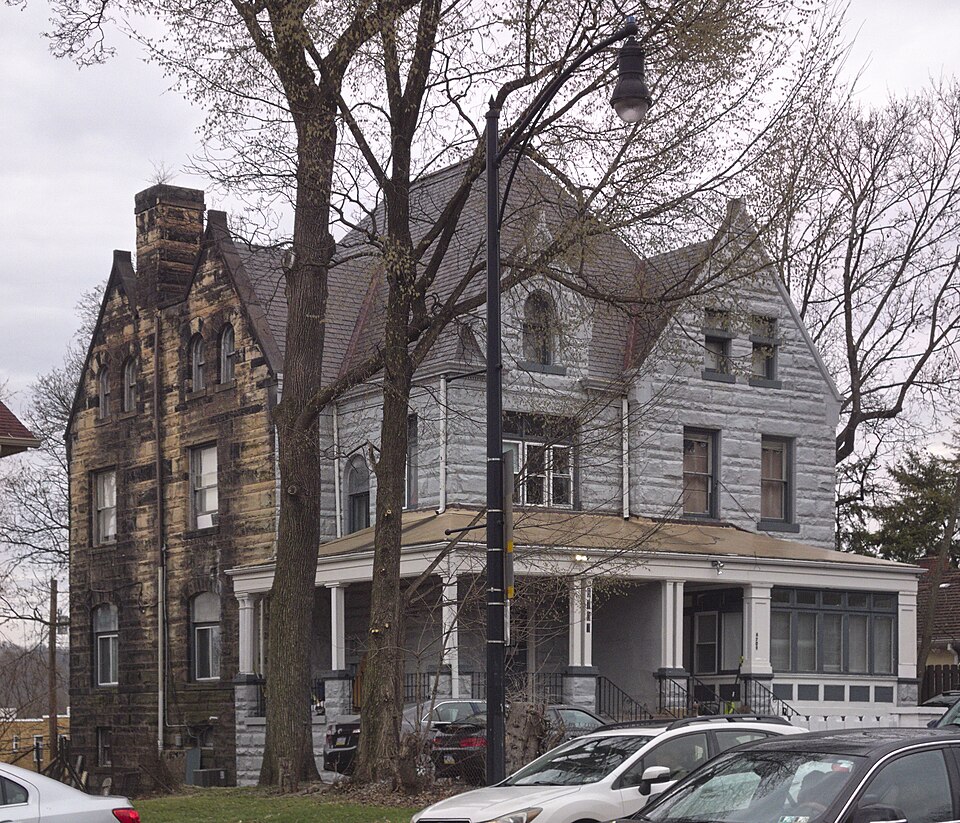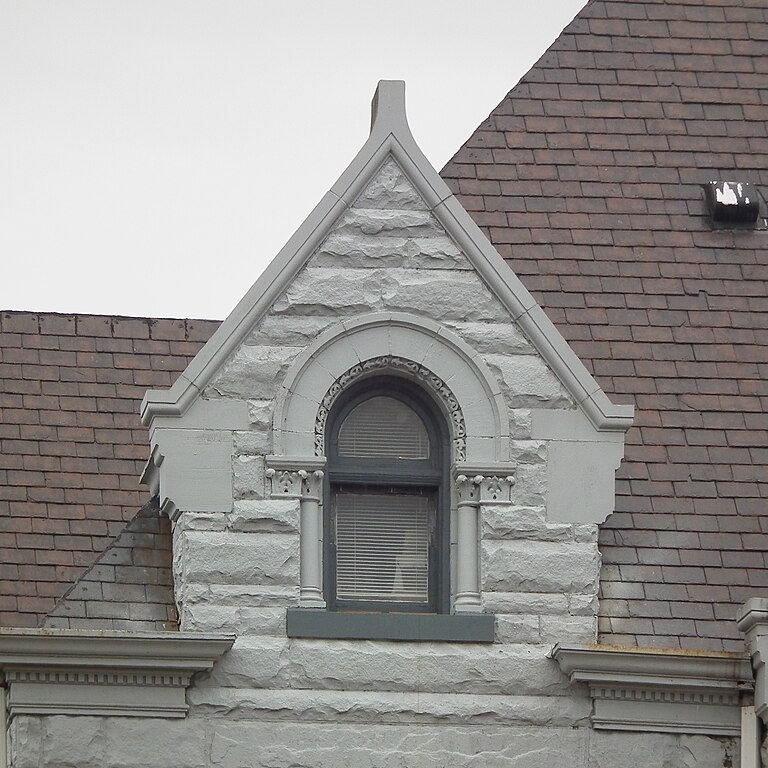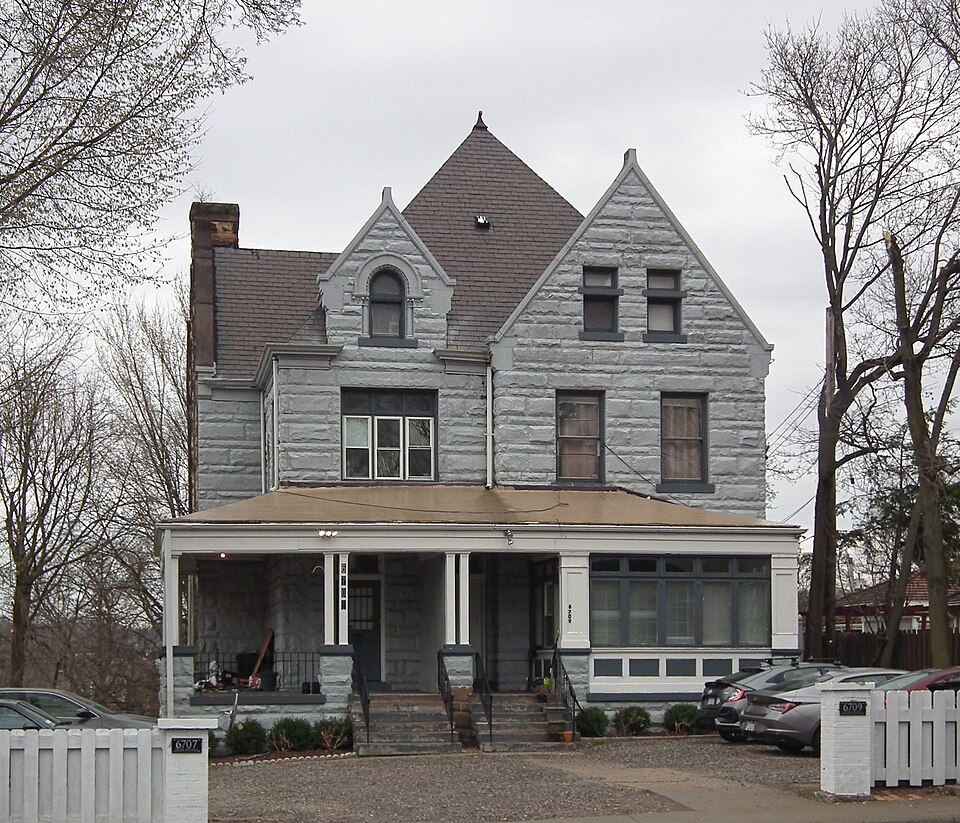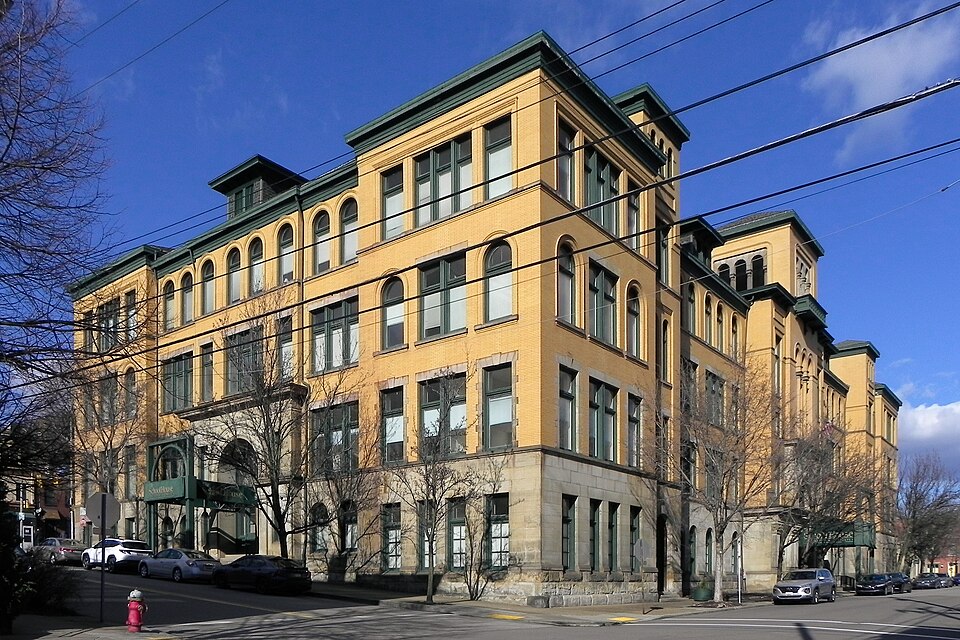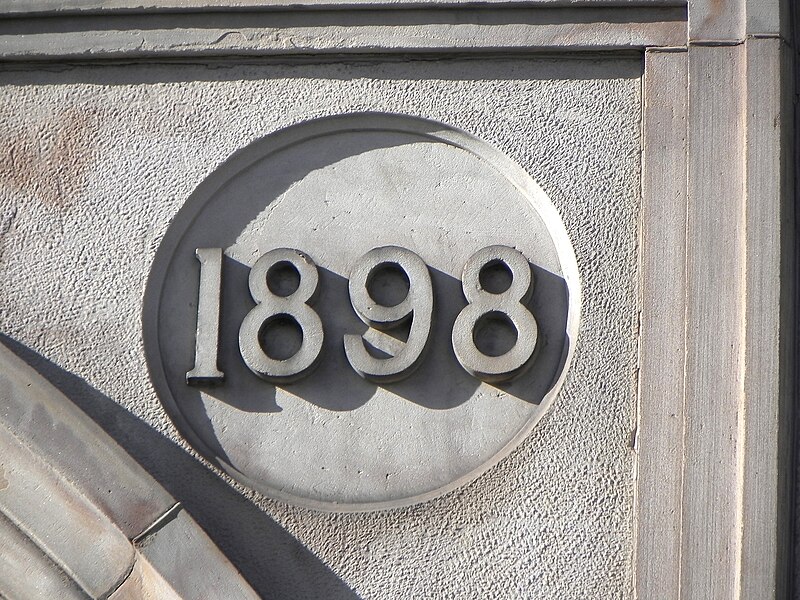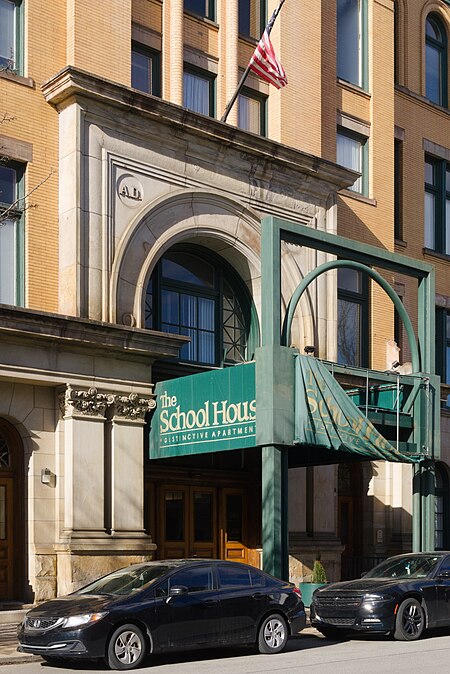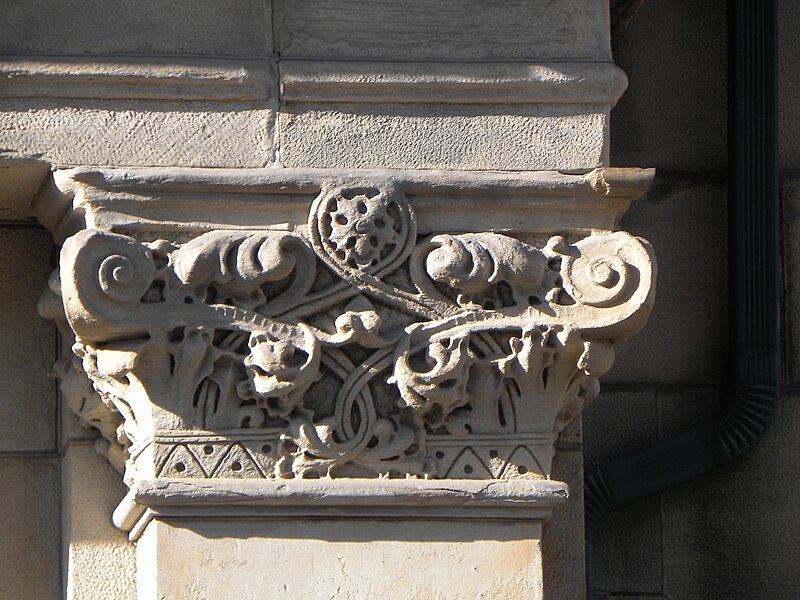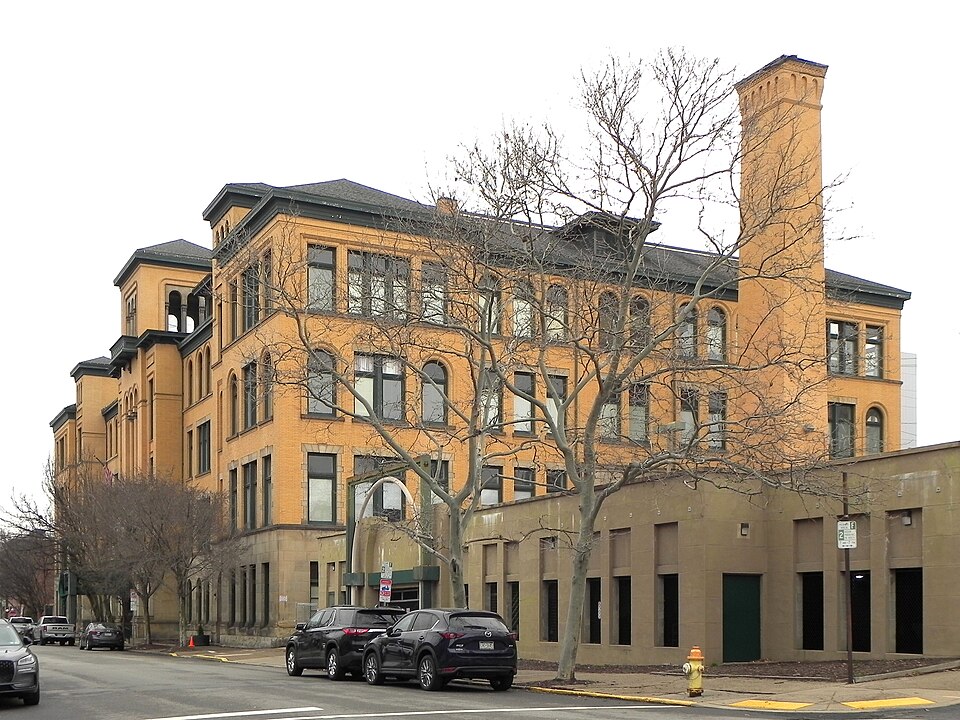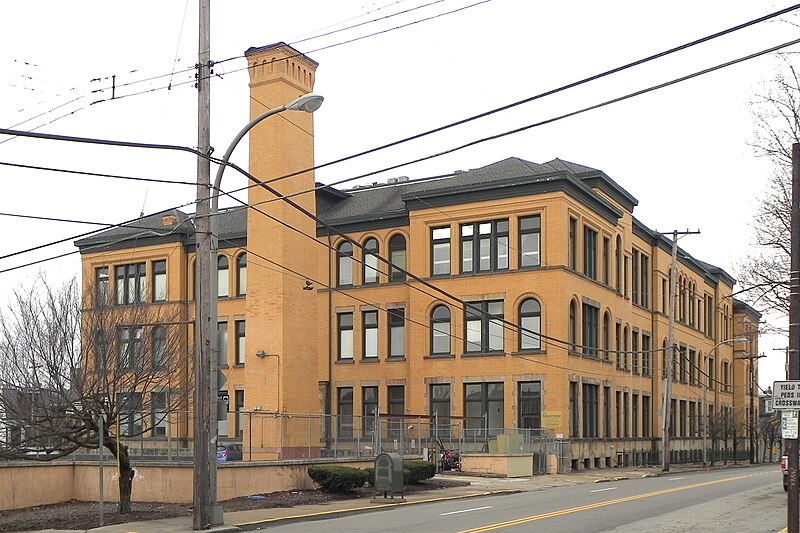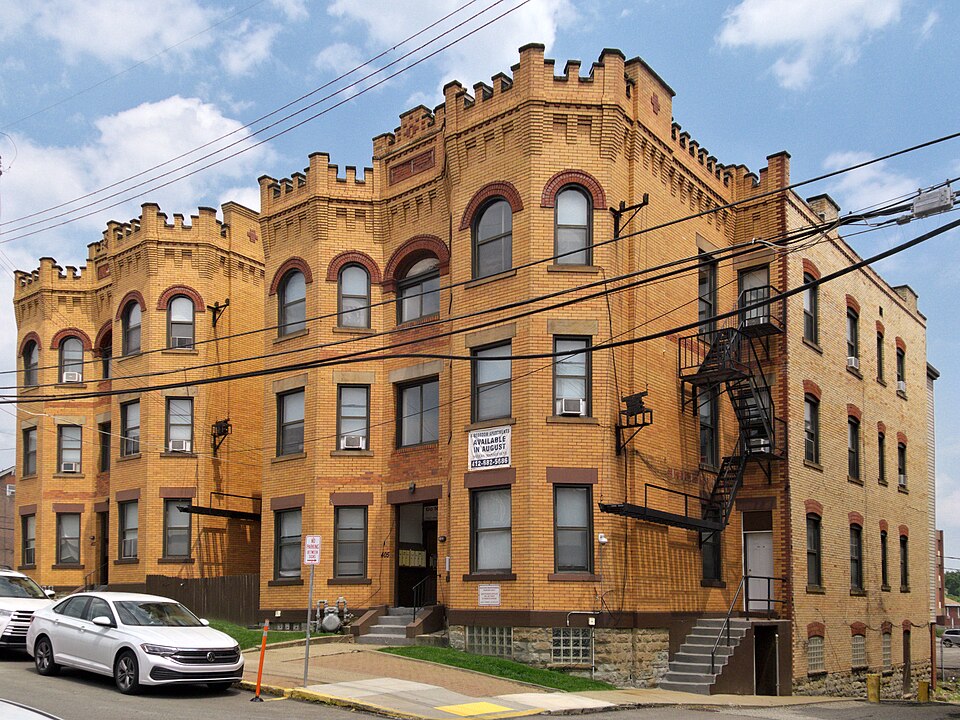
That sounds like the title for a very complicated farce, but these are actually the names of six apartment buildings in Oakland, all of which share a common style. First, on Oakland Avenue, we have Harry, George, Matilda, and Laura, which look like four buildings but are really two identical buildings, each divided in two parts. The romantic battlemented fronts give tenants the chance to imagine themselves as medieval lords and ladies fresh out of a Walter Scott novel. These fantasies were effective in selling apartments, and probably still are.
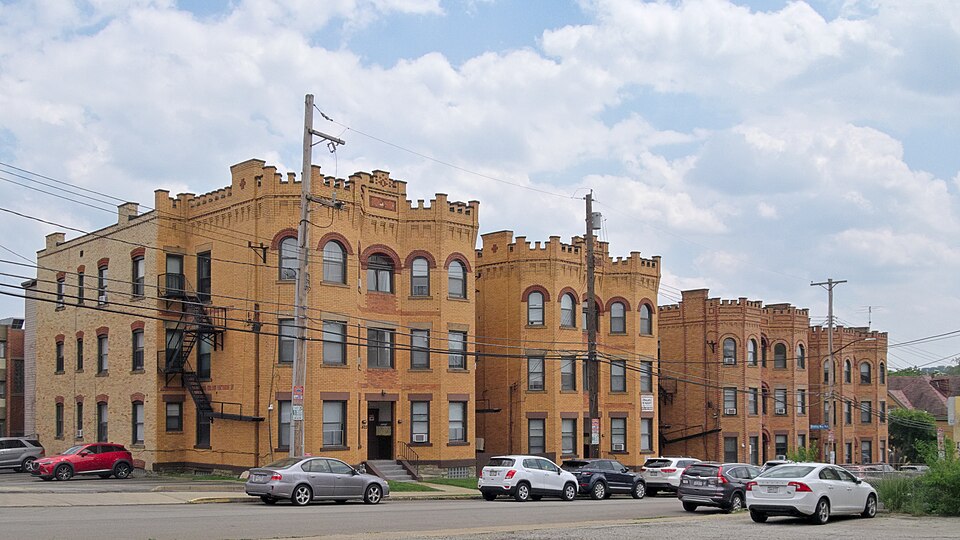
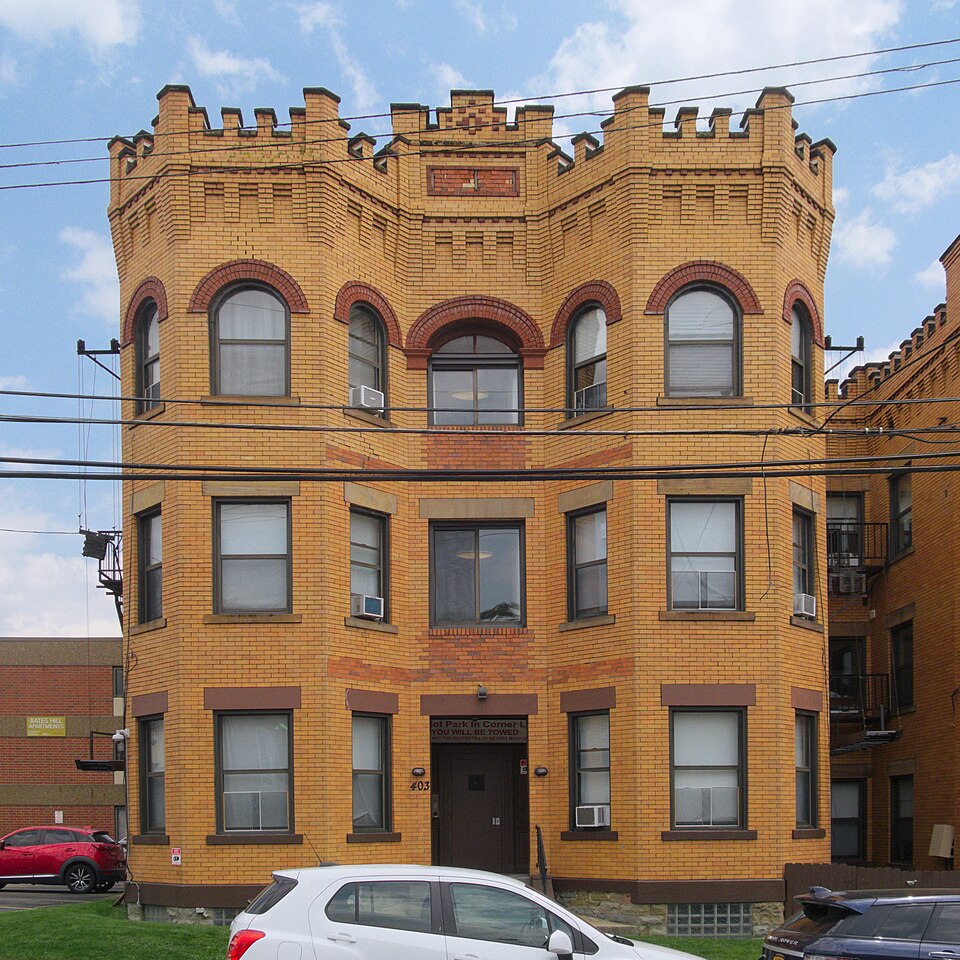
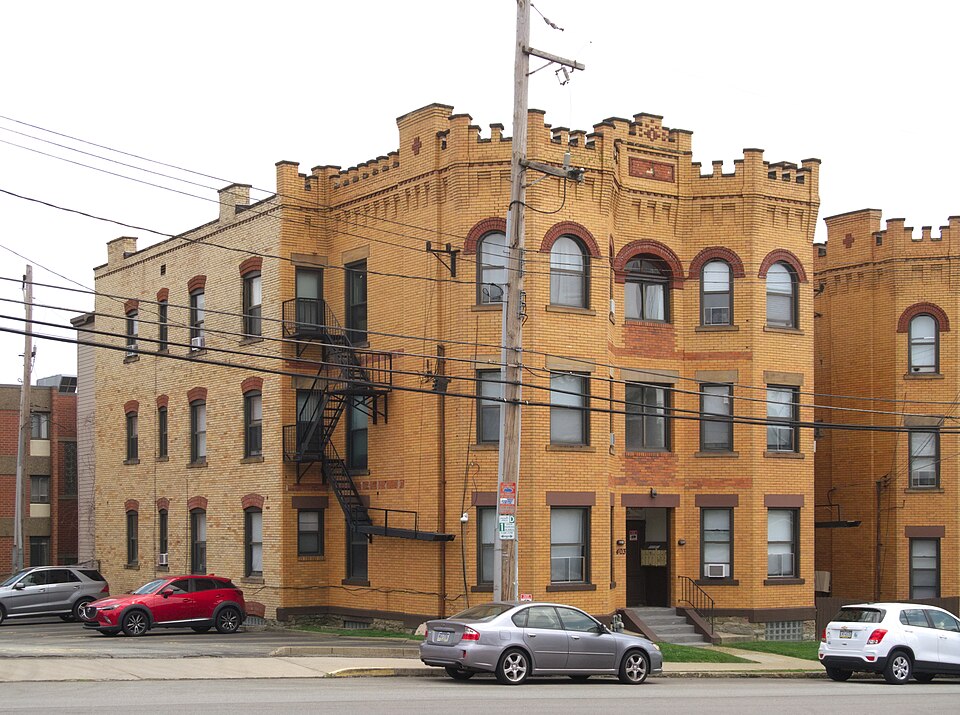
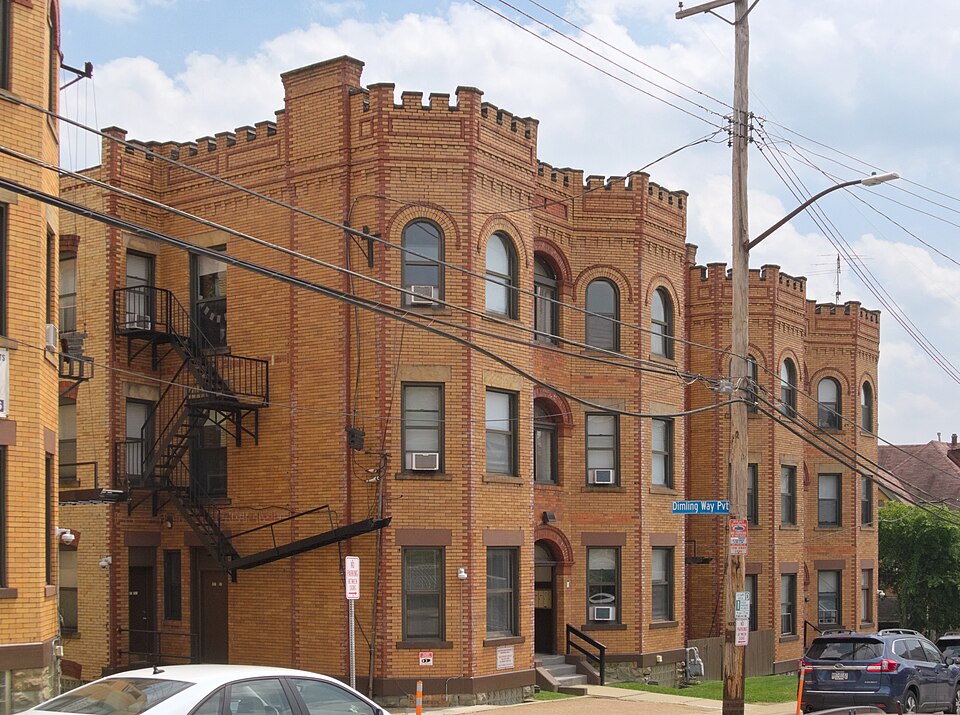
Around the corner on Dawson Street are two other buildings that share many of the same details. They had the same owner—John Dimling (note the sign for the private alley Dimling Way in the picture above)—and we can guess that they were probably drawn by the same pencil. These are called Hilda and Herbert.
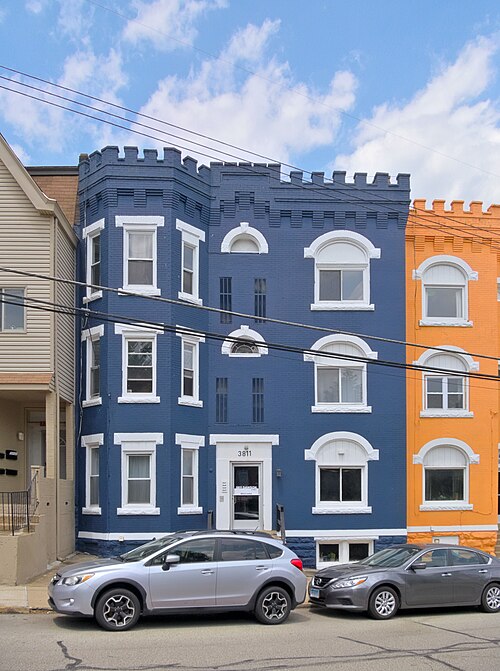
Here the architect has responded to the challenge of a lot that is not rectangular with a pair of asymmetrical designs that resemble but do not repeat Harry, George, Matilda, and Laura.

John Dimling was also the owner of the rainbow terrace on Dawson Street, and it is a good guess that the same architect was responsible for that as well. That architect was almost certainly Frederick Sauer, who is best remembered for his churches (like St. Stanislaus Kostka and St. Stephen Proto-Martyr) and his backyard whimsies, but who was very busy with all kinds of work. Father Pitt has not found these particular buildings in construction listings yet; but John Dimling was responsible for quite a bit of development in this part of Oakland, and in looking through the trade magazines for Mr. Dimling’s name, we find that, whenever an architect is mentioned, it is always and without exception F. C. Sauer during the period when these buildings went up (around the turn of the twentieth century). We therefore attribute them to Sauer until someone proves otherwise.
Comments

